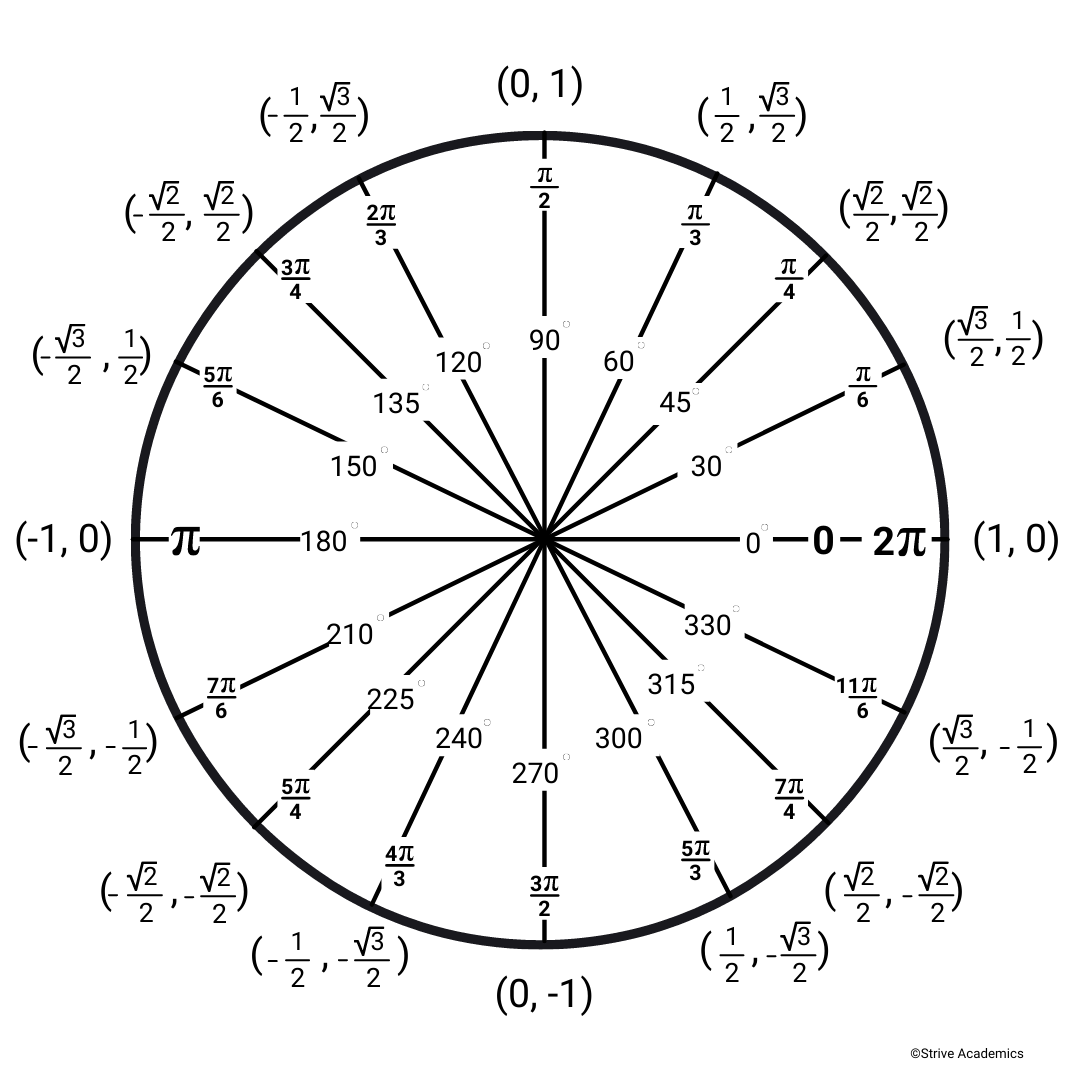Unit Circle!!!
Here are some tips + tricks to tackle the unit circle
First of all, do NOT memorize this, it is very unnecessary
Secondly, read this if you know what sin, cos, tan, reference angles and right triangles are. If you don't, read the info above and come back later.
- Find the reference angle
- Find the sin, cos, or tan of the reference angle. You do this by remembering the side lengths of the 30, 60, 90 or 45, 45, 90 triangles
- Check which quadrant the angle is in
- If you are finding sin, think about if y is negative or positive in that quadrant. If you are finding cos, think about if x is negative or positive quadrant.
If you are finding tan, find the negative/positive value of both x and y then divide sinx/cosx
- Switch the sign of the answer accordingly
- This takes some time, but don't get frustrated!
Let's Try this Together!
- Let's find sin 7π/6 (210°)
- Find the reference angle. In this case, it is π/6
- What is sin of π/6? If you remember the 30, 60, 90 triangle, it is 1/2
- Which quadrant is 7π/6 on the coordinate plane? It's in quadrant 3 where, where x and y are negative
- What does sin represent? Since we used the opposite angle (the y), sin represents the y value on a coordinate plane.
- Since y is negative in quadrant 3, we change 1/2 to -1/2
Why the angles 0, π/2, π, and 3π/2 are Different From the Right Triangle Values
For the x and y axis angles, think conceptually about the values
Keep in mind that the radius of the circle is 1
- When the angle is 0, the values is (1, 0) because it's the distance from the midpoint to the corners of the circle at 0°
- This principle is the same for the rest of the angles: When the angle is π/2 (90°), the value is (0,1) (cos π/2 = 0, sin π/2 = 1)
- When the angle is π (180°), the value is (-1,0) (cos π = 1, sin π = 0)
- When the angle is 3π/2 (270°), the value is (0,-1) (cos 3π/2 = 0, sin 3π/2 = -1)
















